Rogue "Pothole Robin Hood" Fills Road Cavities With Mosaic Art
“What he does is really beautiful and creative.”
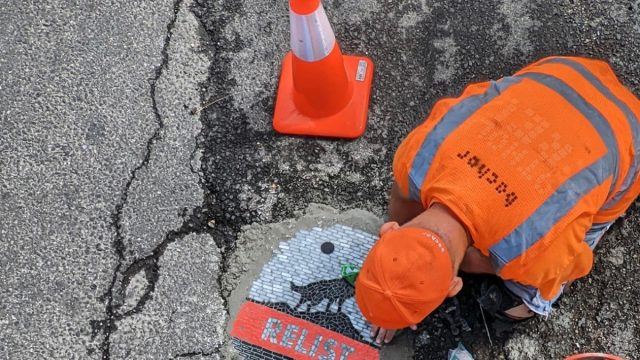
A Chicago artist has been traveling around the country, beautifying ugly potholes by turning them into miniature works of art. Jim Bachor uses Italian glass and marble to create gorgeous mosaics to fill in the potholes, with no funding (or permission) from local authorities.
"People loved it and thought it was funny," Bachor says of his first pothole mosaic in 2013. "Was it legal? I still don't know. I decided to turn my hobby into a bit of a Robin Hood thing. If I had to ask for permission, I wouldn't be doing this." Here's why Bachor does what he does, and the public reaction to his art.
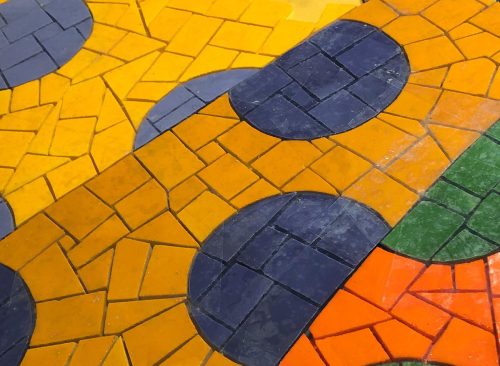
Bachor doesn't just create mosaics that look pretty—he also likes to make social commentary through his designs. In Washington D.C. he filled a pothole with a spine, "to remind people of what that is." In New York, where he has been dubbed the "Pothole Picasso," Bachor has created mosaics of cockroaches and rats.
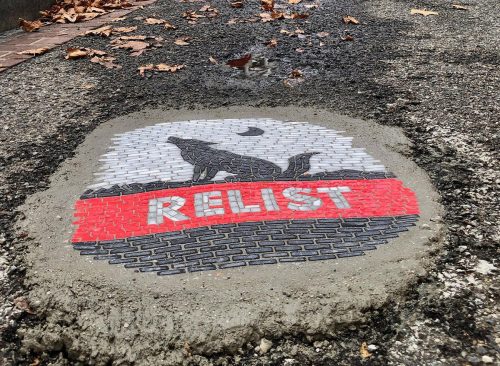
Bachor was commissioned by the #RelistWolves Campaign, an organization campaigning to have the Northern Rocky Mountain wolf reclassified as an endangered species, to fill D.C. potholes with mosaics of wolves. "What he does is really beautiful and creative, and we thought his work would help to raise awareness," says group co-founder Samantha Attwood.
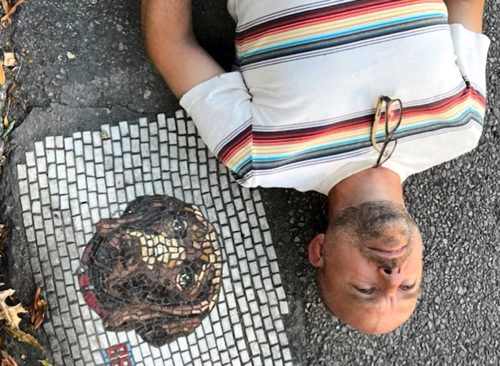
One wolf mosaic was installed outside a bookstore called Solid State Books, which helped raise awareness about the campaign. "The store put up a display with books and information about relisting the wolves, and they made sure that Jim's pothole didn't get covered up by cars parking there," Atwood said. "It became a wonderful partnership that is still resonating."

So how does Bachor find the perfect pothole? The artist says he researches future work sites, preferring cavities measuring 18 inches by 24 inches. "The perfect pothole is actually really hard to find," Bachor says. "It has to be on the edge of a road that isn't too beat up, and people have to be able to see it from five or six feet away. The pothole can't be in the middle of the street because I don't want to block traffic and I don't want to get hit. And if I show up and a car is parked over the pothole, it's game over. I could be waiting for days."
RELATED: 10 Most Embarrassing Ways People Have Gone Viral This Year
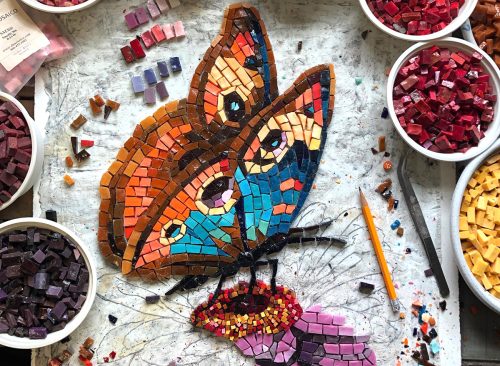
Bachor first became interested in mosaic art after a trip to Pompeii, Italy in the late 1990s. "A guide pointed out a mosaic on the site and said the art looked the same as the artist intended 2,000 years ago because marble and glass don't fade," he says. "It blew me away to think that an art form could endure for centuries after I was gone."
Bachor decided to try putting his art to public use after being frustrated with potholes in his neighborhood. "In 2013, the potholes in my neighborhood were particularly bad," he says. "I remember thinking that potholes were an unsolvable problem that was fixed temporarily, then always had to be redone. Everyone hates them. I thought, 'Why not take this durable art form that I'm so passionate about and fix this problem?'"














